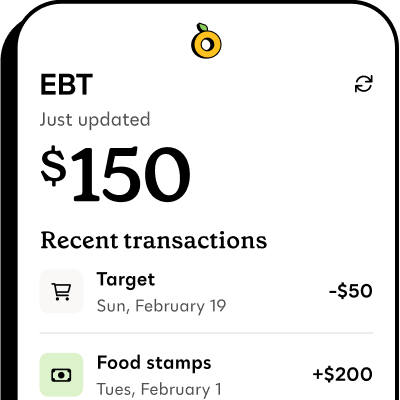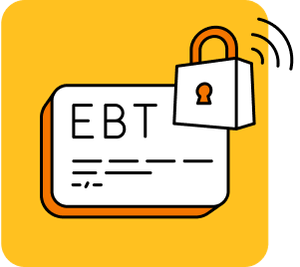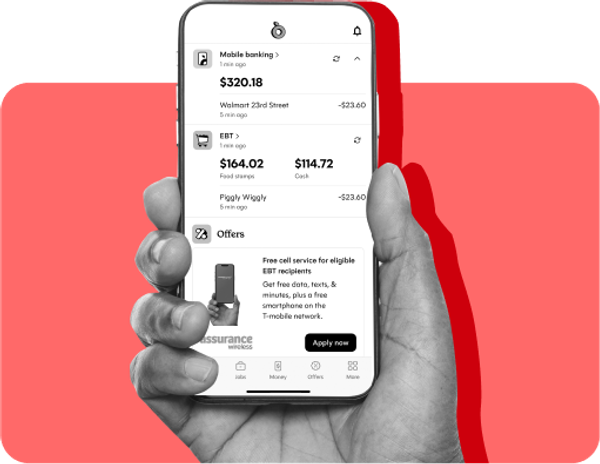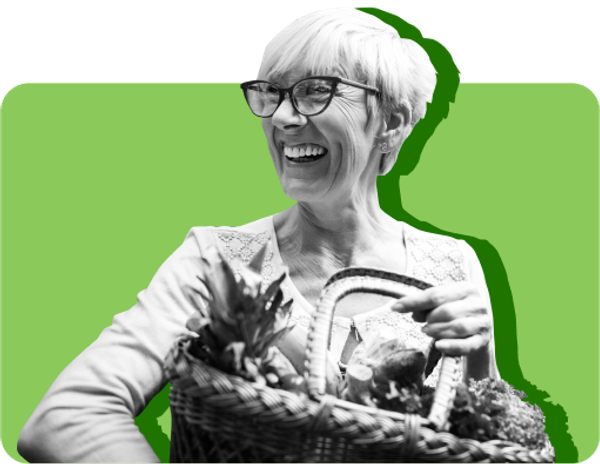


Additional expert review by
- Do seniors qualify for SNAP?
- What are the SNAP requirements for seniors?
- Calculating your net income for SNAP
- How much is the average SNAP benefit for seniors?
- What can SNAP benefits be used for?
- Where can you use SNAP benefits?
- Expedited SNAP benefits for seniors
- What's the SNAP application process for seniors?
- Necessary documents list
- SNAP recertification rules for seniors
- Additional resources for seniors
- Frequently asked questions (FAQs)
Table of contents
- Do seniors qualify for SNAP?
- What are the SNAP requirements for seniors?
- Calculating your net income for SNAP
- How much is the average SNAP benefit for seniors?
- What can SNAP benefits be used for?
- Where can you use SNAP benefits?
- Expedited SNAP benefits for seniors
- What's the SNAP application process for seniors?
- Necessary documents list
- SNAP recertification rules for seniors
- Additional resources for seniors
- Frequently asked questions (FAQs)
The Supplemental Nutrition Assistance Program (SNAP) isn’t just for young families—people age 60 and older may be eligible for SNAP benefits too.
SNAP, also known as food stamps, is a government program that helps over 42 million Americans afford groceries.
The SNAP eligibility rules are different—and often easier—for people ages 60 and up. You may qualify for SNAP even if you own your own home, have retirement savings, receive Social Security benefits, or live with your family.
Here’s what senior citizens need to know about qualifying for, applying for, getting, and using SNAP benefits—along with the specific requirements and income limits needed to qualify.

Propel is the #1-rated EBT balance checking app
Do seniors qualify for SNAP?#do-seniors-qualify-for-snap
Yes, seniors can qualify for SNAP if they meet the requirements. And many seniors do—especially if they're struggling with rising food costs while living on fixed incomes from Social Security or retirement savings.
In fact, about 4.8 million seniors get SNAP benefits today, but that's only about half of all eligible seniors, according to a 2022 study.
Each state has its own rules about who can get SNAP, but they're similar across the country. You may qualify for SNAP based on:
- Your age (seniors must be 60 or older)
- Who lives with you
- Your total income
- Your medical costs
Usually, your SNAP application needs to include everyone who lives with you and buys and prepares food with you.
But if you have trouble shopping and cooking, and someone helps you with meals, you can apply for your own SNAP benefits. Your total household income just needs to be under 165% of the federal poverty level. If you’re confused about who counts as part of your household, check out this guide.
How do SNAP income rules work for seniors?#how-do-snap-income-rules-work-for-seniors
Most SNAP applicants need to meet two income tests: the gross income test and the net income test.
- Gross income is all the earned and unearned money (like Social Security benefits) coming into your household before taxes.
- Net income is based on a series of calculations that includes household size, housing and utility expenses, dependent costs, deductions if the income is from work or not, and for seniors and persons with disabilities, housing costs that are more than 50% of your household's income.
The good news for seniors is that if you're 60 or older, you only need to meet one test—the net income test.
What are the SNAP requirements for seniors?#what-are-the-snap-requirements-for-seniors
To qualify for SNAP when you're 60 or older, your income needs to be below certain limits. For 2025, that means $15,060 for one person or $20,440 for two people.
When counting your income, remember that Social Security, veterans' benefits, and disability payments all count toward your total.
Do you have a disability and live with someone else who is also 60+ and has a disability? You may be able to apply for SNAP separately. Their income just needs to be under 165% of the poverty level.
Also, your assets must total $4,500 or less. When counting your assets for SNAP, you would include any money in your bank account, but not:
- The value of your house if you own it
- Your retirement savings
- The cash value of any life insurance policies
- Income-producing property
- Household goods
Some states, including California, do not have an asset test unless your income is more than the federal poverty line. If your household gross income is above 200% of the federal poverty level, you have to meet the net income test plus a resource limit.
Calculating your net income for SNAP#calculating-your-net-income-for-snap
As a senior applying for SNAP, you can report extra costs that may help you qualify or get more benefits each month.
"Remember, the more that you send in proof of, the higher your deduction, which means the higher your benefit amount," says Dave Guarino, a SNAP expert at Propel, an app that helps you manage benefits. "If you’ve only gotten $23 per month in the past, submitting these medical expenses could really make that bigger.”
Housing deductions for seniors#housing-deductions-for-seniors
If you spend more than half your income on housing, you can deduct the full amount over 50%. This helps if you:
- Live in an area with high rent or property taxes
- Have high utility bills
- Are managing a mortgage on a fixed income
For example, if your income is $1,000 per month and your housing costs are $700, you can deduct $200 (the amount over $500) from your income for SNAP.
Medical deductions for seniors#medical-deductions-for-seniors
You can also deduct medical costs over $35 each month when you apply for SNAP. This includes:
- Doctors’ visits
- Prescription drugs and other over-the-counter medication if it has been approved by your doctor
- Dentures, glasses or contacts, and mobility devices like scooters or wheelchairs
- Inpatient and outpatient hospital expenses
- Attendant care
- Nursing care
- Health insurance premiums
- Transportation costs to and from medical appointments or to pick up medications
- Service animal expenses, including food and vet costs
For example, if you had $100 in deductible medical bills in one month, you would deduct $65 from your gross income on your SNAP application. You can’t deduct medical bills that an insurance company or someone outside of your household pays for.
If you get most of your meals from a residential facility, you may not qualify for SNAP. However, if you live in federally-subsidized senior housing, you might still be eligible. Check with your local SNAP office to learn more.
How much is the average SNAP benefit for seniors?#how-much-is-the-average-snap-benefit-for-seniors
In 2022, the average SNAP benefit for seniors was $158 per month. You may have heard that the average SNAP benefit amount is just $23, but that’s not true.
The minimum an older adult who qualifies can receive is $23 per month, but just 20% of recipients get that amount. That means the overwhelming majority get more.
Just like other SNAP recipients, your benefits will be loaded onto an EBT card that you can swipe just like a debit card at any participating store. You can track your EBT balance with the Propel app, so you can stay on top of how much you’re spending and how much is left on your balance.
There are also other non-food benefits to being enrolled in SNAP as a senior. Other benefits you might find useful in stretching your budget include:
- Discounts on public transit
- Free museum passes
- Amazon memberships and
- Walmart memberships
- Utilities discounts (in some states, getting SNAP makes you automatically eligible for LIHEAP benefits)
Get help with your utility bills
SNAP participants are often automatically eligible for utility assistance. Check out our guide to LIHEAP energy assistance 2024-2025 to learn more.
What can SNAP benefits be used for?#what-can-snap-benefits-be-used-for
SNAP can be used on a range of groceries, including:
- Fruits and vegetables
- Meat, poultry, and fish
- Dairy products, like yogurt, cheese, and milk
- Breads and cereals
- Snack foods, like pretzels, popcorn, and chips
- Non-alcoholic beverages, like bottled water, energy drinks, and juice
- Seeds and plants to grow food for your household
There’s a list of things you cannot buy with your SNAP benefits, including
- Beer, wine, liquor, cigarettes, or tobacco
- Vitamins, medicines, and supplements (if you see a “Supplement Facts” label, it is not eligible for SNAP)
- Live animals
- Hot, prepared foods (except for states with the Restaurant Meals Program)
- Non-food items, including pet foods, toilet paper, cleaning supplies and cosmetics
Where can you use SNAP benefits?#where-can-you-use-snap-benefits
You can use your EBT card at a lot of different places where you usually shop, including:
- Grocery stores and supermarkets, including Trader Joe's and ALDI
- Wholesale stores, including Costco
- Convenience stores, including 7-Eleven
- Gas stations, including Wawa
- Farmers markets (through the Senior Farmers Market Nutrition Program)
- Senior centers (through the Commodity Supplemental Food Program)
- Meal delivery services
- Online delivery (for a list of online retailers that accept EBT, select your location using this map)
Expedited SNAP benefits for seniors#expedited-snap-benefits-for-seniors
Need food help right away? Ask about expedited SNAP benefits when you apply. If approved, you can get benefits within seven days.
You may qualify for expedited SNAP if:
- Your monthly income and cash total less than your rent/mortgage and utilities combined
- Your monthly income is under $150 and you have less than $100 in cash/bank accounts
- You're a farmworker with less than $100 in cash and no other resources
These quick benefits usually cover your first month of SNAP. Some states like Massachusetts may give you more than one month's worth. After 12 months, some states let you apply for expedited benefits again.
What's the SNAP application process for seniors?#whats-the-snap-application-process-for-seniors
To receive SNAP benefits, you have to apply for them and prove that you’re eligible. Most states have applications available online, but you can also ask your local SNAP office for a printed application. You can also name an authorized representative (AR) to apply for you.
Necessary documents list#necessary-documents-list

Before you get started on your SNAP application, you’ll want to gather the necessary documents. These include:
- Proof of identity, like a driver’s license or Social Security card
- A birth certificate, which can be used to verify your citizenship and your date of birth
- Your Social Security Number
- Pay stubs to show your employment status and income
- Criminal background information, such as probation, parole, or felony conviction status
- Utility bills, medical bills, rent receipts, child care receipts, and other household expenses
- Medical bills for costs not covered by health insurance
After you submit your application, you’ll get ready for the interview. Households made up of all seniors and (or adults with disabilities) and no earned income are automatically granted telephone interviews, so you don’t have to go anywhere in person.
Your interview may be as short as 5 minutes, or it can go longer if your situation is more complicated. If you are asked for documents you don’t have, don’t give up. Talk to your caseworker about what to do.
One tip: On the day of your scheduled interview, answer the phone, even if it is a number you don’t recognize! Your interviewer may call you on a private or blocked number. Propel has tips for preparing for your interview here.
Some states have simplified application processes to make it easier for seniors to apply for SNAP, such as the Elderly Simplified Application Project (ESAP). Check here to see if your state offers ESAP.
Your authorized representative can take your EBT card and go shopping for you and even go to the SNAP office if necessary.
They can also be your support person and accompany you to an interview. It’s not a bad idea to have an extra set of ears to help you process and write down information when meeting with your caseworker.
“If you need to change your authorized representative, it should be fairly straightforward,” Guarino says. “Just ask your agency for the AR form and fill it out with the new person’s information. Some states may also allow you to do this online or over the phone.”
SNAP recertification rules for seniors#snap-recertification-rules-for-seniors
To continue to receive SNAP benefits, you occasionally have to recertify, which just means showing documents or participating in another interview to show that you are still eligible to receive food benefits.
In the states with ESAP, the certification period is every 36 months, and there’s no interview required. You don’t have to do any mandatory interim reporting, meaning no one will check up on you between certifications.
“Many states actually make it so that seniors don't have to re-certify as frequently as other households,” Guarino says. “The first thing is just to make sure you ask when you will next need to do a recertification. Some senior households only have to re-certify once every three years.
“That’s great news because it makes things easier, but because it happens less frequently, it can be easier to forget.” Guarino recommends putting a reminder in your calendar.
Additional resources for seniors#additional-resources-for-seniors
More benefits information and application help #more-benefits-information-and-application-help
- AARP: Find state SNAP information for seniors
- National Council on Aging: Find support for food-insecure for seniors in rural areas, women, people of color, and LGBTQ+ adults.
- Local Area Agency on Aging: Get local support for benefits and resources. Use your zip code to find area agencies on aging near you.
- Senior Farmers' Market Nutrition Program (SFMNP): Redeem fresh produce at markets and stands with special benefits for seniors. Check if your local adult care agency offers this program in your state.
- Commodity Supplemental Food Program (CSFP): Get monthly food boxes with basics like cheese, milk, and protein. Find more information in your area.
- Meals on Wheels: Get home-delivered prepared food or group meals delivered to senior centers. Use your zip code to find the program closest to you.
Helplines #helplines
- Elder Helpline: 1-800-262-2243
- Eldercare Locator: 1-800-677-1116
- SeniorLiving.org: 855-241-1699
- Senior Legal Help: 1-884-435-7486
Frequently asked questions (FAQs)#frequently-asked-questions-faqs
Q: What is the highest income to qualify for SNAP?
A: If you are between the ages of 18 and 59, most states require income below 130% of poverty level. Some states like Florida, Hawaii, and California allow up to 200%. For a family of three in 2025, that's $33,576. Your state may have an asset or resource limit. Assets include money in your bank account, but not the value of your house or your car.
Q: Is the $900 grocery stimulus for seniors real?
A: No. There is no grocery stimulus for seniors, this claim is false.
Q: Can seniors get food stamps?
A: Yes, as long as they meet eligibility requirements. The rules are different and often easier for people 60 and older.
Q: What is the income limit for SNAP for seniors?
A: For 2025, seniors can get SNAP if their monthly income is under $15,060 for one person or $20,440 for two people. You can have up to $4,500 in assets like money in the bank. Your home, car, and retirement savings don't count as assets.








